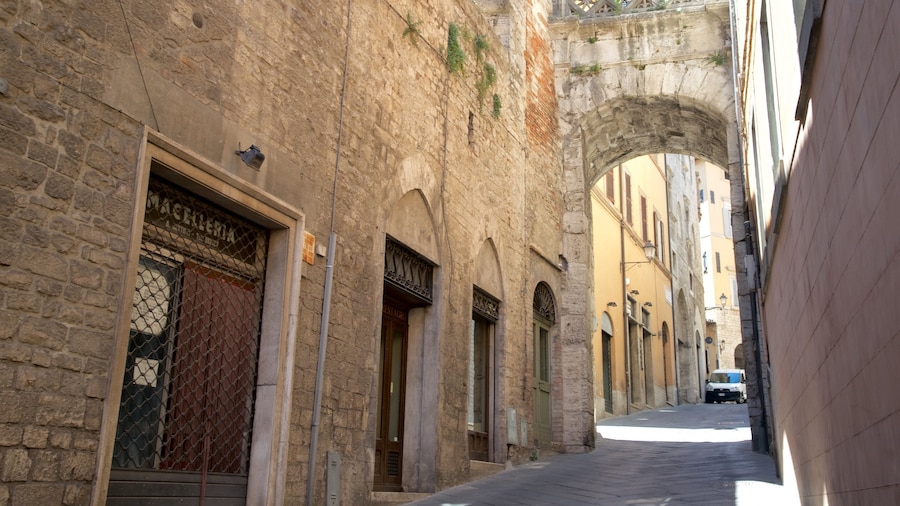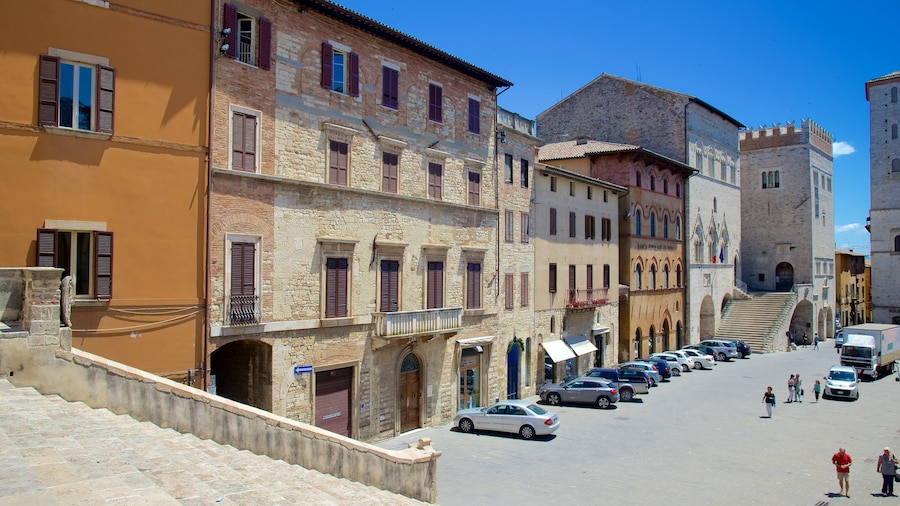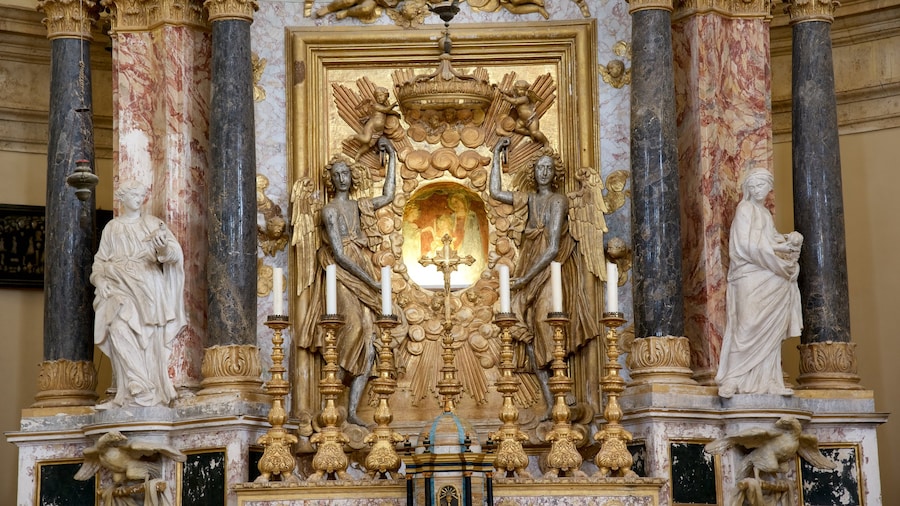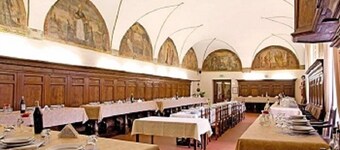The Golden Gate is a portal to a Roman-era defensive wall, which is one of three walls that enclose Todi’s historic centre.
Walk through Porta Aurea (Golden Gate) to discover a wealth of Roman-built landmarks. Porta Aurea is an entranceway to Todi’s Secondo Cerchio delle Mura, an area of the town’s medieval hilltop quarter and one of its three sets of concentric defensive walls. The Primero Cerchio delle Mura date back to the Etruscan civilization while the Terzo Cerchio delle Mura relates to the Middle Ages. All are easily accessible on a walking tour of Todi.
The gate itself is a simple stone structure with an archway set between two rows of stone houses. Spend a moment noting and taking photos of features such as the windows in the upper level. Then, set off on foot in either direction to explore Todi’s Roman district. Follow the atmospheric and twisting lanes framed by grandiose churches and palaces.
Pause to appreciate the Chiesa del Sacro Cuore, Chiesa di San Silvestre and Chiesa di San Antonio. Admire the area’s other gateways, including Porta Catena and Porta Prassede.
Peek inside the boutiques, fashion outlets, handicraft stores and jewelers. Enjoy a break from walking at one of the many bars, cafés and pizzerias. Watch the world go by at pretty squares.
Porta Aurea sits toward the southern edge of Todi’s old town. Public buses stop a 5-minute walk away, on the road outside the city walls. Parking is available, for a fee, on the streets Circonvallazione Orvietana and Viale di Montesanto.
An alternative route from Porta Aurea is to climb the steps behind the gate to Via Porta Libera, part of the Etruscan-period walls. It leads to the arresting Tempio di San Fortunato, home to the tomb of the city’s patron saint. Also within comfortable walking distance of the gateway is Santa Maria della Consolazione, a Renaissance pilgrimage church constructed in the 16th century and home to a revered icon.


















